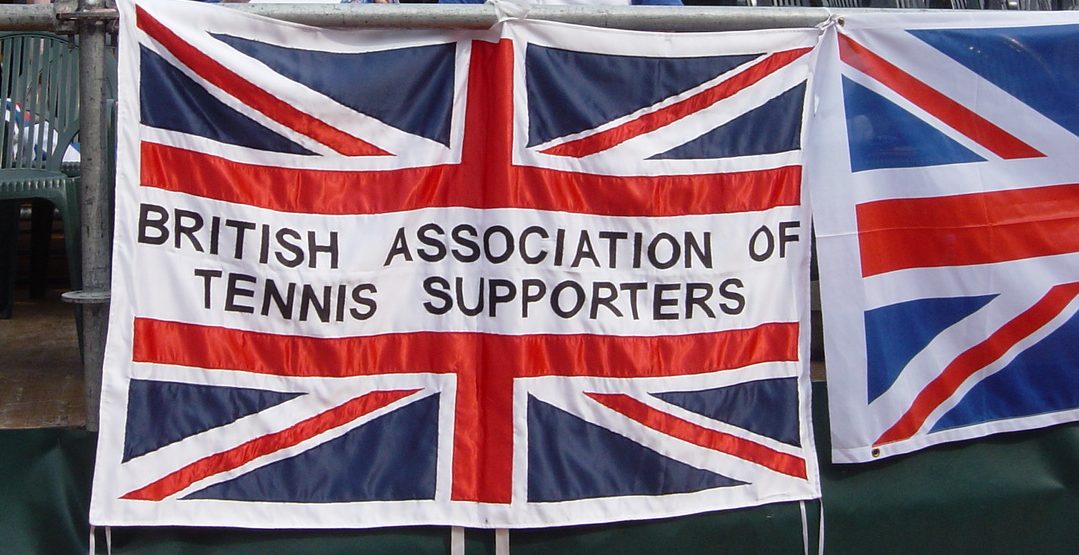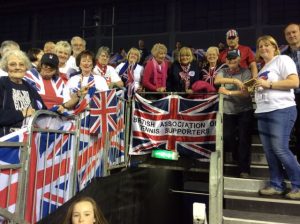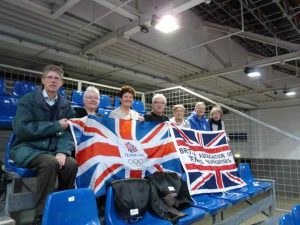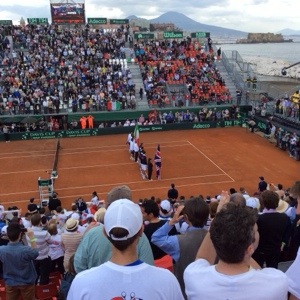BRITISH ASSOCIATION OF TENNIS SUPPORTERS (BATS)
19 April 2018
Mr David Rawlinson
Acting President, ITF Board
Dear David Rawlinson,
Proposals to change the format of the Davis Cup
The British Association of Tennis Supporters (BATS) has been in existence for almost 40 years and has a growing membership, currently standing at more than 900. The Association facilitates large attendances at Davis Cup ties both home and away. In addition, we arrange trips to the Fed Cup and other ATP World Tour events. In short, we have an intense interest in any proposed changes to the current Davis Cup format.
BATS meets annually at a sports hotel in Basingstoke for our AGM and most recently we gathered in March. As you might expect, the Davis Cup arose as an agenda item in addition to social media discussions involving the wider membership. BATS members appear to be of one voice in relation to the current proposals and it is right that we share this with you in advance of August when we understand this matter will be decided upon.
As experienced Davis/Fed Cup fans, we understand that highly ranked players do not always participate as part of their national team. This can of course be a strength as up and coming players have the opportunity to excel. Cameron Norrie did just that in Marbella earlier this year. We also understand that tennis players have a very busy schedule and, given there is little advantage to Davis Cup participation in terms of finance or ranking, motivation to take part is likely to be low. On the other hand, it is very clear indeed that players in some cases are highly motivated to win the Davis Cup at least once for their country. Once achieved, they are then likely to take a break or just play in one tie. The link between Davis Cup participation and the Olympics does have an effect on players’ willingness to play and we would anticipate that this requirement would remain.
BATS has a major concern that the motivation to change the Davis Cup format does not take account of fans in any way at all. We worry that the changes are more motivated by money and some senior player needs, and that this event will be concentrated during one week at the end of November in far away places such as Singapore.
We do not have to remind you of the kind of atmosphere generated at a home tie in Davis Cup. Fans are not only prepared to travel to Europe or further afield, but actively embrace the prospect, often to the point of over subscription, which clearly illustrates the zestful enthusiasm of our fans to support such an event. Fed Cup events with multi teams taking part only show such vigorous support when the home team makes an appearance. For example, support for the Estonian team most recently.
The proposals as they stand will offer the rich tapestry of 18 national teams in one week but it seems to us that such a large event will have to be staged far away from where most fans actually live. Even the most committed of us are not likely to travel to Asia on an annual basis in order to support our national team. In other words, this will not be a Davis Cup tournament any more and we shall lose the single opportunity to cheer for, in our case, GB. To this end, we feel strongly that this proposed change of approach to venue i.e doing away with home and away, fundamentally and somewhat negatively alters the central and unique tenet of the Davis Cup itself.
While we do note that not all of the senior players support the change proposals, we do alsoacknowledge that the uncertainty of the current format can have a negative effect upon a player’s diary. This may offer the opportunity to move away from an annual event, rather than re-vamp the tournament completely.
BATS is well aware that tennis, like other sports, is largely resource led and it is clear that large amounts of money are at stake here to promote this annual event at the end of November. We would ask that the LTA/ITF consider the support and the commitment of home tie fans and the undoubted contribution that makes to the ability of teams to perform well.
May we suggest that a consultation period is built in so that the views of fans much more widely can be taken alongside those of business and players. Part of that consultation should outline the difficulties experienced within the current format so that we can think of compromise solutions for change that will not threaten the very essence of Davis Cup tournaments.
Yours sincerely,
Lynne Moran
Secretary, BATS Executive Committee




































